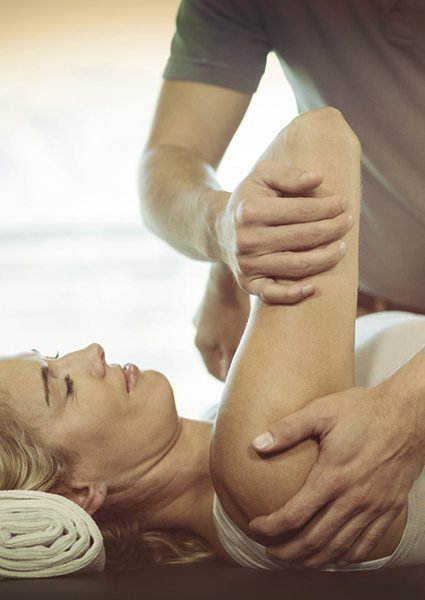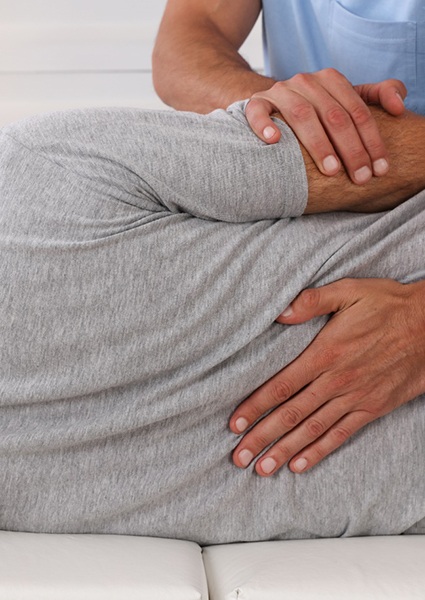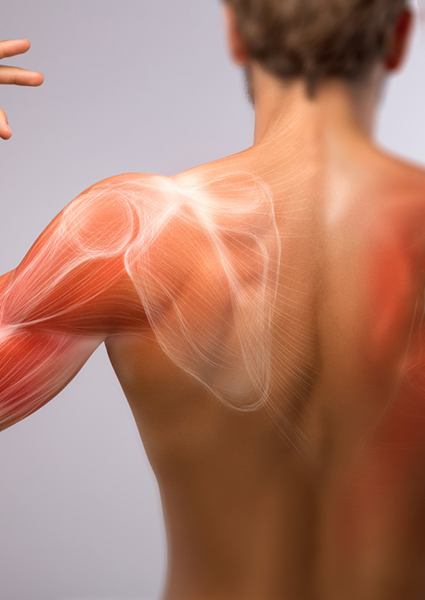Muscle Energy – Hollywood, FL
Loosen Stiff Muscles and Decrease Your Pain
Do you often experience muscle pain or joint stiffness? If your condition results from poor posture or routinely placing your body in a position that stresses it, you might be a candidate for Muscle Energy, which may also be referred to as Muscle Energy Technique (MET). This type of osteopathic manipulative treatment has the potential to loosen stiff muscles and decrease your pain — all without the use of invasive therapies or the need to place foreign substances into your body. To learn more about MET and how it can help Hollywood, FL patients, continue reading this page. Then, contact our office when you are ready to schedule a consultation.
Why Choose the Institute for Non-Surgical Orthopedics of Hollywood for Muscle Energy?
- Highly Skilled Osteopathic Team
- Fast, Effective Pain Relief
- Enjoy Increased Mobility
What Is Muscle Energy Technique?

MET is a unique form of active osteopathic manipulation. The Education Council on Osteopathic Principles defines it as, “a form of osteopathic manipulative diagnosis and direct treatment in which the patient’s muscles are actively used on request, from a precisely controlled position, in a specific direction, and against a distinctly executed counterforce.”
That may sound like quite a mouthful, but the basic idea behind MET is easy to understand. Essentially, it requires the patient (you) to make voluntary muscle contractions while your body is positioned in a specific way. MET results in muscle relaxation and a reduction in pain. It does so by activating special structures within the muscles, which are called Golgi tendon organs and muscle spindles. These important components play a large role in muscle control and coordination.
How Does MET Work?

During your first visit to our office, your doctor will perform a thorough screening to identify areas of restricted mobility throughout your body. Places with the greatest hypomobility will be the main targets of your MET session.
Following the screening, you will be helped to place your body in a specific position and asked to contract your muscles. You may be asked to push against or toward a barrier. When your session concludes, you will go through a second assessment. It is likely that you will experience a quick increase in mobility, a noticeable reduction in pain, and fewer uncomfortable muscle spasms.
The Two Types of MET

There are two major types of MET: reciprocal inhibition and post-isometric relaxation. They use somewhat different techniques, and the one that is best for your situation will depend on the specific issues that you wish to address.
Reciprocal inhibition is often used to minimize pain and aggravation in damaged muscles and soft tissues. It requires you to move away from a restrictive barrier, allowing the muscles opposite of the ones you contract to relax more fully.
Post-isometric relaxation is more geared toward helping patients who are struggling with chronic conditions, such as persistent back pain and short muscles. It focuses on stretching and lengthening muscles via controlled contractions and involves moving specific body parts toward a restrictive barrier.
Muscle Energy Technique FAQs

MET is an unfamiliar concept for many people, so it is understandable if you want to learn more about it before you book a consultation with our team. To assist you, we have put together the following list of Muscle Energy Technique FAQs, along with succinct and easy-to-understand answers. If your specific questions are not touched on here, give us a call. Our expert team will be happy to speak with you!
What Are the Benefits of Muscle Energy Technique?
Some noteworthy benefits of MET include:
- It is effective for many people.
- It is noninvasive.
- It does not involve the use of any medications, so you will not have to worry about drug interactions or severe side effects.
- It can be combined with other treatments to provide optimum relief for a broad range of musculoskeletal conditions.
What Are the Indications for Muscle Energy Technique?
MET is suitable for many patients. In fact, it may be useful for any condition in which the goal is to relax and lengthen muscles, leading to an increased range of motion. MET can be used in almost any joint in the human body.
MET is often requested by athletes who wish to prevent future joint and muscle injuries. It is also a good fit for many people who have limited range of motion due to injuries or chronic conditions in their shoulders, back, legs, hips, or arms. For example, it may reduce the symptoms of sciatica and scoliosis. It is also wonderful for addressing general long-term muscle pain and stiffness.
What Are the Contraindications for Muscle Energy Technique?
Muscle Energy Technique is safe for most people due to its nonpharmaceutical, noninvasive nature. However, there are some individuals for whom it is not indicated. For example, it may not be suitable for people with low vitality, certain post-surgical patients, or anyone in an intensive care unit (ICU). Additionally, patients who cannot easily communicate and follow instructions may not be able to benefit from MET.
If you are not sure if MET is right for you, talk to our team. After we learn about your symptoms and your medical history, we can recommend your next steps.
How Long Is the Contraction Held in a Typical Muscle Energy Technique?
Different practitioners may have different preferences and philosophies when it comes to using MET to help patients. In general, though, the contractions do not need to be held for a long time in order to produce positive results. Some research indicates that 5-second contractions are the most effective. The contractions may need to be repeated multiple times during a MET session.
Of course, every patient is unique. When you visit us, we will design a custom treatment plan based on what we believe is best for your specific situation.









